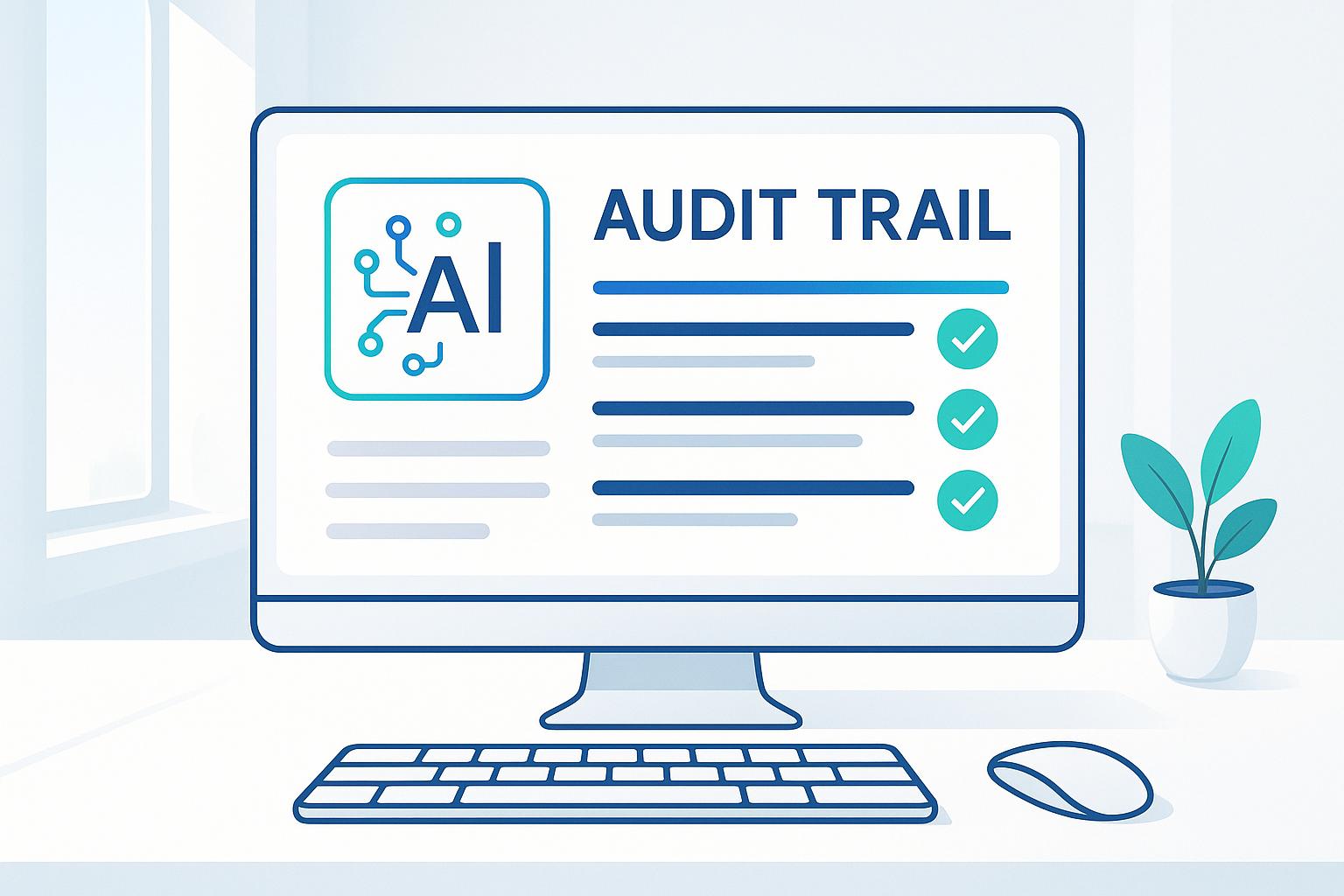AI is transforming finance by automating tasks, improving accuracy, and enhancing decision-making. Here's how it integrates into financial workflows:
- Automating Routine Tasks: AI handles data processing, reconciliation, and reporting, reducing manual errors and saving time.
- Improving Financial Analysis: Tools offer forecasting, cash flow management, and scenario planning using real-time data.
- Strengthening Fraud Detection and Compliance: AI tracks transactions, detects anomalies, and ensures regulatory compliance.
Key Benefits:
- Real-time insights for better decisions
- Reduced regulatory risks
- Faster, more accurate financial operations
To integrate AI effectively:
- Start small with specific tasks.
- Choose tools that fit current systems.
- Train teams on practical applications.
Platforms like Lucid Financials and Zillion AI simplify operations with features like real-time modeling, compliance monitoring, and automated reporting. AI helps businesses scale efficiently while maintaining workflow stability.
Automate Your Financial Workflows in 30 Minutes: A Hands-on Guide
Finding Areas for AI Integration
Finance teams can use AI to replace manual tasks, improve precision, and increase efficiency in areas like automation, analysis, and compliance.
Automating Routine Tasks
AI takes care of repetitive financial work, freeing up teams to concentrate on strategic decisions without disrupting established workflows. Tools like Lucid Financials showcase this with integrations for QuickBooks and payroll systems:
| Task Type | How AI Helps |
|---|---|
| Data Processing & Reconciliation | Extracts and verifies financial data automatically |
| Reporting & Documentation | Creates reports and manages documents automatically |
Improving Financial Analysis
AI supports better financial decisions by processing large datasets to provide actionable insights. Some standout features include:
- Forecasting: Uses historical data and market trends to predict future financial outcomes.
- Cash Flow Management: Offers real-time tracking and adjustments for cash positions.
- Scenario Planning: Quickly generates and compares different financial scenarios, helping businesses prepare for various possibilities.
Strengthening Fraud Detection and Compliance
AI continuously scans financial activities to catch potential issues early. These systems:
- Track transaction patterns in real-time.
- Spot unusual activity that could signal fraud.
- Help ensure compliance with regulations.
For example, Zillion AI's platform processes issuer filings and economic data in real-time, sending immediate alerts for potential compliance concerns [2].
Adding AI Tools to Financial Workflows
Selecting AI Tools
When picking AI tools for financial workflows, it's essential to focus on platforms that integrate easily with your current systems and deliver measurable results. Here are some key factors to consider:
| Selection Factor | What to Look For |
|---|---|
| System Integration & Scalability | Compatibility with existing systems and room to grow |
| Security Features | Strong encryption, compliance, and access controls |
| Implementation | Quick and straightforward setup |
| Cost Structure | Flexible pricing that grows with your needs |
After selecting the right tool, the next step is to integrate it effectively into your processes.
Best Practices for Integration
Integrating AI into financial workflows requires a well-thought-out plan. Here's how to approach it:
1. Assessment Phase
Review current workflows to pinpoint areas where AI can add value. Define clear success metrics to measure impact.
2. Implementation Strategy
Introduce AI gradually. Start with smaller teams or projects, gather feedback, and monitor how it performs before scaling up.
3. Training Program
Develop training materials focused on practical applications rather than technical jargon, ensuring users understand how to leverage the tool effectively.
A structured approach like this can make the transition smoother and maximize the benefits of AI tools.
Example: Using Lucid Financials

Lucid Financials is a great example of how AI can enhance financial workflows. It offers features like industry benchmarking, scenario planning, and automated investor updates. Its pricing adapts to businesses at different stages, and it integrates seamlessly into existing systems.
Key benefits of Lucid Financials include:
- Real-time data synchronization
- Advanced financial modeling tools
- Automated performance tracking and reporting
- Benchmarking tailored to specific industries
sbb-itb-17e8ec9
Getting the Most from AI in Financial Workflows
Boosting Efficiency and Cutting Down Errors
AI is reshaping financial operations by automating tasks that were once time-consuming and prone to mistakes. Tools like Lucid Financials work seamlessly with existing systems to deliver key benefits:
| Task Type | Business Impact |
|---|---|
| Data Processing | Processes data in real-time with fewer errors |
| Financial Reporting | Speeds up decision-making |
| Compliance Monitoring | Lowers regulatory risks |
By automating these workflows, businesses can focus their resources on growth-oriented activities instead of managing routine tasks.
Driving Business Growth
AI-powered tools don’t just save time - they also provide insights that help businesses grow smarter. Here are some ways AI supports expansion:
- Resource Allocation: Pinpoints underused resources and suggests better ways to deploy them.
- Market Analysis: Analyzes trends to guide strategies for entering new markets or scaling operations.
- Financial Forecasting: Predicts growth by analyzing past performance and market conditions, helping businesses plan for different scenarios.
Lucid Financials brings these capabilities to life with features like:
- Benchmarking tools for competitive insights
- Resources for scaling teams and raising capital
- Flexible financial modeling options
- Real-time tracking for ongoing performance
"AI can help identify areas of cost savings and optimize financial planning for scaling teams and raising capital" [1]
The platform’s Professional and Enterprise plans are designed to grow alongside your business. With advanced modeling tools and seamless integration, they ensure your financial systems can handle increased demands without disrupting your workflow. This makes scaling smoother while keeping operations steady.
The Future of AI in Financial Workflows
New Trends in AI for Finance
AI is changing how the financial sector operates, introducing tools that streamline and enhance workflows. Predictive analytics now allows for more accurate financial forecasting, while advanced AI systems can process and analyze massive amounts of financial data like never before.
| AI Tool | Impact on Business |
|---|---|
| Predictive Analytics | Provides real-time insights, improves risk assessment, and enables personalized planning |
| Blockchain Integration | Increases transaction security and simplifies compliance processes |
| Automated Data Processing | Handles complex financial tasks with speed and precision |
Adapting to AI in Finance
To fully benefit from AI, businesses need to evolve their workflows thoughtfully while maintaining operational stability. As these tools reshape the financial landscape, strategic adjustments are essential.
"AI integration elevates financial planning by combining automation with real-time insights" [1]
Financial teams should focus on the following areas to make the most of AI advancements:
- Data Quality Management: Establish strong validation processes to ensure that AI systems work with accurate and reliable data.
- Staying Compliant: Keep up with financial regulations related to AI and ensure all automated systems meet these standards.
- Upskilling Teams: Invest in ongoing training to help teams effectively use AI tools and understand their capabilities.
The future of financial workflows will lean heavily on platforms that bring together multiple AI features. Today’s financial planning tools combine predictive analytics with automated data handling, offering all-in-one solutions that simplify operations for financial teams.
Conclusion: Using AI for a Competitive Advantage
Integrating AI into financial workflows is changing how organizations handle their financial operations. By using AI tools wisely, businesses can streamline processes, improve accuracy, and scale operations to keep up with today’s fast-moving market. To make the most of these tools, financial leaders need to focus on smart implementation and ongoing improvements.
Key Points for Financial Leaders
Successfully using AI means balancing new technology with practical execution. AI platforms bring clear benefits to financial workflows when integrated thoughtfully into current systems. For example, tools like Lucid Financials can simplify operations with features like automated reporting, real-time analytics, and strategic planning.
Here are three areas where financial leaders should focus their AI efforts:
| Focus Area | Benefits | How to Get Started |
|---|---|---|
| Data Processing | Real-time insights, automated reporting | Use current data streams as a starting point, then expand gradually |
| Risk Management | Better fraud detection, compliance monitoring | Pair AI-driven tools with human oversight for effective monitoring |
| Decision Support | Improved forecasting and planning | Begin with targeted use cases and scale based on success |
To make AI work effectively, financial leaders should focus on:
- Strategic Integration: Choose AI tools that fit seamlessly into current workflows without causing disruptions.
- Step-by-Step Growth: Start small, targeting areas where AI can deliver quick wins, and expand based on results.
- Ongoing Development: Provide continuous training and development to help teams fully utilize AI capabilities.
Platforms like Lucid Financials offer advanced tools for financial modeling, performance tracking, and industry benchmarking, helping organizations stay competitive while maintaining smooth operations.
FAQs
How can AI be used in the financial sector?
AI offers a range of applications in the financial world:
| Application Area | Primary Functions | Business Impact |
|---|---|---|
| Data Processing | Real-time reporting and insights | Speeds up processing with machine learning |
| Risk Management | Transaction monitoring, anomaly detection | Improves security by identifying patterns |
| Financial Planning | Budgeting and forecasting | Supports decisions with data-driven insights |
These examples highlight how AI can reshape financial operations. However, success depends on selecting tools that align with specific business needs.
Is there an AI tool for financial analysis?
Yes, there are several AI tools tailored for financial analysis. One example is Lucid Financials, which integrates seamlessly into existing workflows. It offers features such as:
- Real-time financial modeling
- Automated data extraction
- Predictive analytics
- Performance tracking
- Compliance monitoring
AI tools, like Lucid Financials, simplify tasks by embedding machine learning algorithms into platforms like Excel [2]. With features such as instant analysis, scenario modeling, and industry benchmarking, these tools are designed to streamline financial processes while staying compatible with established systems.


